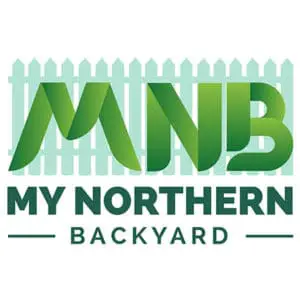
As you sit on your patio and gaze at the postage stamp that is your backyard in many major cities you will definitely have thought it: Can I buy my neighbor’s backyard and expand my lot to really have enough space to move? Since I didn’t know, I decided to do some research.
So, can you buy your neighbor’s backyard? In many cases you can buy part of a neighbor’s backyard, but local zoning regulations will likely prevent purchasing all of it without the house that goes with it. How much you can buy will depend on local minimum lot sizes.
With dreams of expanding your domain, read on for more.
Can You Buy Your Neighbor’s Backyard?
The good news about looking into buying your neighbor’s backyard is that you’ve likely already been through a similar kind of transaction when you bought your house in the first place. Buying a part of a plot of land is very much a regular real estate transaction, but with an extra layer of regulation added on to try and limit potential bad ideas.
Assume a scenario where your neighbor is never outside, their yard is a mess, completely overgrown, and an eyesore and a waste of space. An enterprising young person might want to buy that up, move the fence up against their neighbor’s wall, and claim the newly resized backyard as their own. Unfortunately, the local municipal authority likely won’t allow that kind of change – basically because it would put your neighbor’s house on a plot of land that was too small for it, in their view. This also very much applies to postage stamp lots that cover most new developments. You’re unlikely to be able to buy a part of an already small property.
Conversely, if you live in a location with very large lots there is a much better chance that your city, town, township, county, etc… will let you lop off a portion of that land and add it to your yard. However – The zoning bylaws, including the minimum lot size, are different in every location so in a particular area even large lots may not be able to be divided.
Where To Start Buying A Neighbor’s Backyard
Let’s start this off by saying that I’m not a lawyer, I can’t give legal advice, and what follows is based on interwebs research I completed when looking at the subject. If you’re really interested in getting part or all of a neighbor’s yard I would definitely suggest getting in touch with a local real estate lawyer to understand all of the fine details that would be specific to your municipality. The rules as well as the process and procedure for this kind of lot adjustment will be different for each property and each municipality or county and will require individual research. The good news is that it appears to be a pretty universal process. While the fiddly bits might be different from place to place, the main points of changing a boundary line seem to be pretty similar.
Start by finding a real estate attorney and talking about what the specifics are locally to purchase part of your neighbor’s backyard. It might be that the complications in your area make it not worth pursuing, and you might be better off in finding a new house with a bigger yard. This should be a very short conversation about the art of the possible and list of things to consider. You’re not asking the attorney to do any work yet. Consider the lawyer you used for the house purchase as you’ll have a previous relationship. If that particular individual doesn’t have the knowledge or expertise to help, they should be able to point you to someone who does.
If the purchase seems possible, talk to your neighbor to find out if they are open to the possibility. If they aren’t open, this process goes nowhere and there is no point continuing to do any research as this is not something you can force. If your neighbor is open to selling part of their yard you will have to start your research on all of the potential issues that you’re going to face to get this done. Your attorney will be able to help with this – get the complete list from them.
The next few steps can be done in parallel – some of them you may need information from others, so it’s not clear cut about which is first. You’ll have to do what is most comfortable for you.
- Determine a price for the parcel of land that you’re going to acquire. This can be done out of the air with the seller, but you may want to consult a realtor in order to understand what the value of the piece of property should be. A lot of things can go into the value outside of only your use – what it can be used for (can you build on it?), if there are easements or right of ways, etc… If you’re selling a part of your land, consider what your neighbor might end up doing with the land. It would be unfortunate to sell a chunk of land to a neighbor to make their property large enough to sell to a developer, and you end up with condos behind you instead of open spaces. You can again talk to your lawyer to make sure that you’re protected when you do buy or sell a piece of your property.
- Contact your municipality, township, or county to determine the requirements for changing the lots. This can be called a lot split, a lot line adjustment, or a boundary line adjustment.
- Find out if local zoning allows for the change in the lot size. There is typically a minimum lot size in your neighborhood and cutting off to much of one yard to move to another might make one too small. The lots also need to be in the same zoning class, or you’ll need to get the zoning changed and that can be both time consuming and expensive.
- If there is a mortgage on the property being reduced, or any other liens, get permission from the lien holder to reduce the property. If a bank is holding a 100% mortgage on a property, they aren’t going to let you cut off 10% of the land. If the mortgage is in good shape and there is enough equity to keep mortgage rations acceptable, this should be an issue. You may need an assessment to validate the value of the property being reduced.
- Hire a surveyor to do property surveys of both lots and create new drawings of the new boundary lines. You will definitely need to have both lots surveyed and submit both drawings when you submit your application to have the boundaries changed.
- If you are splitting the piece of land from the previous lot and not adding it to your own, a lawyer will need to draft up a new deed for you. This may also be required when changing property boundaries, so check with your lawyer on it.
When you have all this put together, head down to the clerk’s office and file an application to have the boundary changed. It will be reviewed and if there are no issues the boundaries will be changed.
Lot Split vs Lot Line Adjustment/Boundary Line Adjustment
It looks like there are two kinds of adjustments that can be made to buy part of your neighbor’s yard – a lot split and a lot line adjustment or boundary line adjustment.
A lot split is typically used to create an entirely new parcel of land – for instance if you want to buy part of your neighbor’s land to build a new house on you would want a lot split and an entirely new piece of land. To complicate matters, some areas will make an adjustment to a boundary line with a lot split – so talk to your lawyer about it.
A lot line adjustment, which is also called a boundary line adjustment in some cases, is used to simply move the boundary line of the lot. This is the typical process to adjust the size of your yard and is typically much less expensive than a lot split.
How Much Does It Cost to Buy Part of a Backyard?
The cost can vary wildly based on your particular situation. If your house and your neighbor’s are both mortgage free, there is no issue with property size, and it’s just a matter or a lot line adjustment, you may get away with only spending $1200-$1500.
If your situation is complex, zoning needs to be changed, there is significant negotiation required, or other complications that require a fair amount of attorney time, you may be looking at $10,000++.
It appears that a typical lot line adjustment with all the surveys, fees, and legal advice will cost between $3000-$6000.
Summing Up
If your neighbor is in, you should be able to buy part of their land – but it’s a complex process. Doing it wrong or making a mistake can come back to haunt you – can cost you thousands of dollars if your neighbor (or new neighbor) end up suing you. Make sure you get a lawyer involved to help you through the process and ensure there are no problems down the way.

